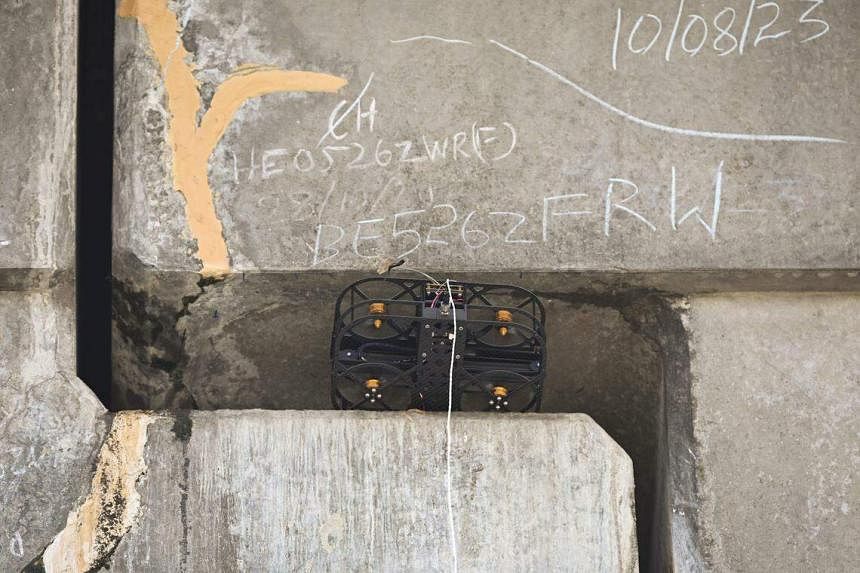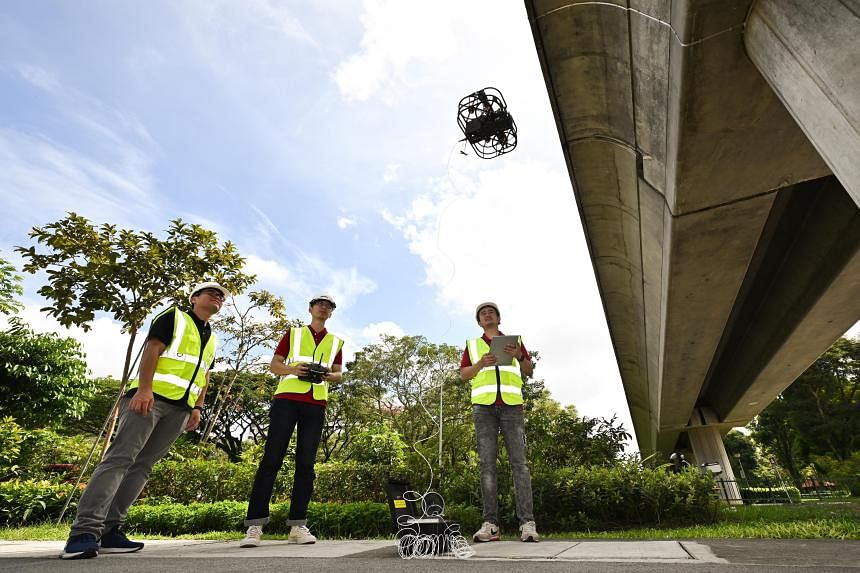SINGAPORE - An engineering professor and two postgraduate students at the Singapore University of Technology and Design (SUTD) have devised a specialised drone for inspecting viaducts in a safe and efficient manner.
Associate Professor Foong Shaohui, 42, who is associate head of pillar, engineering product development, at SUTD, came up with the idea in 2019 when chatting with Land Transport Authority (LTA) officers who told him of the difficulty in inspecting viaduct bearings for wear and tear, or defects.
These disc-like bearings facilitate the movement of viaduct beams, which expand and contract with changing temperatures.
The task would involve lifting a worker on a mechanical hoist when the ground below allows for this, and even erecting temporary scaffolding over more difficult terrain such as waterways.
The worker would have to work at several metres above ground and depend on manual methods of measuring the bearings.
Prof Foong then worked with two students to come up with a drone system for this task – Mr Liu Jingmin, 28, a master’s student in charge of hardware development for the drone, and Mr Denzel Lee, 30, a PhD student in charge of software development for the project.
They took one year to come up with a prototype and three years to refine it. The patented custom-built system is fully automated and artificial intelligence-enabled.
This means viaduct bearing inspection can be a one-man operation taking “five to 10 minutes”, compared with about an hour now with the manual method involving several workers.
The drone is slim enough to enter the expansion gaps on viaducts, and is equipped with powerful LED lighting and an automatic camera system that takes several pictures of the bearing.
The images are then stitched together by special software to form an accurate 3D image.
The drone is tethered to a battery pack, making it safer to operate near MRT tracks.
“There are 16,000 bearings across our older MRT lines. This drone system allows for more inspections to be done in a day,” Prof Foong said. “Plus, when there is no human climbing up, there is no danger of falling. Falls are the most common worksite accidents.”
The SUTD team currently has three such drones, and Prof Foong reckons it will need around 10 if the system is adopted by the LTA.

The authority said the drone initiative “aims to enhance the inspection of bearings installed along the elevated sections of our North-South and East-West lines, where accessibility can be challenging”.
A spokeswoman said the drone system cuts down on the time for such inspections “by alleviating the need for cumbersome logistical set-ups, such as scaffolds and cherry pickers”. This will go towards more timely rectification works when these are necessary.
She added that drones are currently being used to capture aerial footage of MRT construction activities to support monitoring of work developments.
“We will continue to explore how this technology can further enhance effectiveness of work in the land transport system,” she said.
Meanwhile, SUTD has a one-year pilot project with Gardens by the Bay to use drones for the pressure cleaning of elevated structures and plants. It is also working on a similar project with the National Parks Board to conduct health checks on trees.
It has a start-up called Spinoff Robotics, which will commercialise these drone systems. It is headed by SUTD research fellow Tan Chee How, 31.


